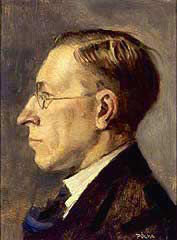Diet
Point of Order: Nutritional Prescriptions and Food Sequence
The complex 'foodscape' for glycemic control
Posted July 1, 2018

Count Alexander Ilyich Rostov, in Amor Towles' novel, A Gentleman in Moscow, (2016) encounters the adventuresome, precocious nine-year-old Nina Kulikova in the Metropol Hotel, to which the Count has been confined. In one scene, Nina, who will be having dinner with her own father somewhat later, “has taken the liberty of ordering herself an hors d’oeuvre”—” a “small tower of ice creams.” “Quite sensible,” says the Count, as he watches her eat her ice cream “one flavor at a time, moving from the lightest to the darkest in shade.” (p. 91)
Young Nina may be following the saying, "Life is uncertain; eat dessert first," but this may not be the most sensible strategy for weight control and particularly, for our long-term health, according to researchers Louis J. Aronne, MD, the Sanford I. Weill Professor of Metabolic Research, professor of clinical medicine, and Director of the Comprehensive Weight Control Center, Division of Endocrinology, Diabetes & Metabolism, and Alpana P. Shukla, MD, assistant professor, at Weill Cornell Medicine. In other words, the sequence in which we consume our food may have an impact, just as do the quantity, quality, and macronutrients (e.g., proportion of protein, fat, & carbohydrate) of our meals. (Shukla et al, Diabetes Care, 2018; Shukla et al, BMJ, Open Diabetes Research & Care, 2017.)

These researchers acknowledge that low calorie diets, especially those emphasizing intake of fewer carbohydrates, are difficult for people to adhere to, even "under the best of circumstances." "Most patients stray, to a similar degree, regardless of which diet they are on," and often tend to increase their carb intake substantially over time. (Orloff, Aronne, and Shukla, American Journal of Clinical Nutrition, Letter to the Editor, 2018) The key predictor to weight loss, not surprisingly, says Aronne, is "adherence to a diet." (Umashanker et al, Current Athersclerosis Reports, 2017) While increased caloric intake and decreased physical exercise are the "main drivers" of our overweight and obesity epidemic in the US (e.g. 69% Americans are overweight and 39.8% are obese), researchers are becoming increasingly aware that not just caloric intake per se, but dietary patterns--i.e., the foodscape-- (Forouhi et al, The BMJ, 2018) may be promoting obesity and its metabolic consequences. (Stanhope et al, Obesity Reviews, 2018)

There is still controversy regarding the best proportion of macronutrients for a diet, (e.g. lower carb/higher fat; lower fat/higher carb) or even what constitutes "low carb" (Forouhi et al, 2018) because of a lack of long-term, well-controlled studies. (Stanhope et al, 2018) Generally, a "personalized nutrition" approach is warranted for most people. (Stanhope et al, 2018) While all macronutrients lead to increased plasma glucose levels and a subsequent increase in insulin after eating, carbohydrates have "the greatest effect" on plasma glucose and insulin. That is why carbohydrate restriction was the main prescription for control of diabetes prior to the discovery of insulin by Banting, Macleod, and Best in the 1920s. A diet higher in carbohydrates, especially those refined and without fiber, therefore, has more "potential" to increase fat gain by a cascade of metabolic effects that ultimately lead to increased hunger and greater food intake. (Stanhope et al, 2018)
In recent years, by developing nutritional prescriptions, investigators have explored whether food order could reduce postprandial glucose and insulin levels, improve long-term glycemic control, and avoid eventual metabolic complications. (Cavalot et al, The Journal of Clinical Endocrinology & Metabolism, 2006; Ma et al, Diabetes Care, 2009; Imai et al, Journal of Clinical Biochemistry and Nutrition, 2014; Alsalim et al, Diabetes, Obesity, and Metabolism, 2016; Kuwata et al, Diabetologia, 2016; Tricò et al, Nutrition & Diabetes, 2016; Faber et al, Pediatric Diabetes, 2018) These studies, albeit involving small numbers of subjects, have involved different populations worldwide (e.g. Japan, Italy, Australia, The Netherlands) and have included children with type 1 diabetes, as well as adults with type 2 diabetes. Consistently, they have found that food sequence, with carbohydrates eaten after protein and fat, leads to improved glycemic control.

For example, Aronne and Shukla conducted studies on their overweight and obese patients with type 2 diabetes (all treated with metformin) to assess the temporal effects of food sequence on glucose, insulin, glucagon-like peptide (GLP-1), and ghrelin. Their studies involved a sample of 16 subjects, with stringent and well-controlled protocols. Subjects consumed the same meal on 3 days in random order: either carbohydrates first (bread and orange juice), followed after a 10-minute interval by protein and vegetables; carbohydrates last; or altogether in a sandwich. (Shukla et al, 2018; Shukla et al, 2017) The researchers found a significant difference (lowest peaks) in levels of glucose when carbohydrates were consumed last and lower peaks when consumed all at once in a sandwich (e.g. chicken, bread, vegetables) as compared to carbohydrates first. Insulin levels were lower whereas GLP-1 (a gut hormone that slows gastric emptying) levels were higher in the carbohydrate-last meal as compared to the carbohydrate first meal. Carbohydrates first, for example, led to a rebound in ghrelin, a hormone indicating hunger, that was similar to preprandial levels. Aronne and Shukla acknowledge they cannot yet generalize their findings since their sample was small, and they were studying a specific population for a short period of time with certain food choices. They speculated, though, that the carbohydrate last sequence delayed gastric emptying and led to a slower rate of its absorption, possibly also related to the presence of fiber in the vegetables. They intend to repeat their studies with patients who have type 1 diabetes, those with prediabetes, as well as those who are healthy, and they hope to determine the optimal timing for carbohydrate consumption.

What, though, is the potential relevance, of decreased plasma glucose levels (so-called glucose excursions) after a meal? Apparently, there is considerable relevance. For one thing, diabetes is a major global public health concern, with a prevalence estimated to increase worldwide to 629 million people by 2045. (Forouhi et al, 2018) According to the National Diabetes Statistics Report 2017, from the Centers for Disease Control and Prevention, in 2015, there were an estimated 30.3 million people in the US alone (9.4% of our population) with diabetes. (Type 2, most associated with obesity, accounts for 90 to 95% of these cases.) It is also estimated that of that total, millions go undiagnosed, and an estimated 33.9% of US adults (older than age 18) had prediabetes in 2015. The percentage increases with age so that by age 65 years, nearly half of adults have prediabetes.

Many researchers acknowledge that patients with type 2 diabetes experience wide variations in their postprandial glucose levels, and a fasting plasma glucose level is a "poor indicator" of plasma glucose at other times of the day and does not even correlate with HbA1c levels. (Bonora, International Journal of Clinical Practice, Supplement, 2002.) Further, data indicate that postprandial levels are an independent risk factor for cardiovascular disease (Bonora, 2002) and the many other complications of diabetes. (Bell, Southern Medical Journal, 2001.) Acute increases in glucose levels may lead to the production of free radicals, endothelial dysfunction, and even a transient state of hypercoagulability. (Bell, 2001.)

Macrovascular complications include coronary artery disease, peripheral artery disease, and stroke; microvascular complications include retinopathy (e.g., a leading cause of blindness), nephropathy (e.g., chronic kidney disease requiring dialysis or kidney transplant) and neuropathies (e.g. neuropathic pain and burning, as well as orthostatic hypotension, tachycardia, female incontinence, and erectile dysfunction.) (Fowler, Clinical Diabetes, 2008; American Diabetes Association, 2018) Apparently many patients with type 2 diabetes still develop certain neuropathies despite eventual adequate glucose control because they have had asymptomatic hyperglycemia for years prior to their diagnosis. (Pop-Busui et al, Diabetes Care, 2017) And since there are no adequate treatments for nerve damage once it develops, prevention, through a focus on glucose control and especially postprandial levels becomes essential. (Pop-Busui et al, 2017)
That diabetic complications persist even after postprandial levels stabilize is known as metabolic memory, (Mobbs, Frontiers in Endocrinology, Lausanne, 2018) first described in 1973 by Szepesi et al (Proceedings of the Society for Experimental Biology and Medicine.) The term was again used by Cahill (NEJM, 1980) to describe how a diet can "result in metabolic patterns that may persist...a type of chronic adaptation or metabolic memory."
Bottom line: In his new book The Order of Time, (2018) Carlo Rovelli writes, "...the past leaves traces of itself in the present." (p. 166) "...things change one in respect to the others," he says (p. 120) Perhaps this is a poetic way of looking at the long-term pathological effects of uncontrolled postprandial hyperglycemia. In those without diabetes, postprandial hyperglycemia is transient; in those with either type 1 or type 2 diabetes, these glycemic excursions may have serious repercussions. (Madsbad, Journal of Diabetes and Its Complications, 2016) Since type 2 diabetes, in particular, has become an epidemic itself among the US population and is expected to worsen over the next years, (and because so many cases remain undiagnosed), it seems worthwhile for all to consider ways of curtailing hyperglycemia. Attention to our food sequence, with eating carbohydrates after protein, non-starchy vegetables, and fat, is a potential effective first-line "behavioral strategy" (Shukla et al, 2017) that holds promise for weight control by way of glucose regulation.





